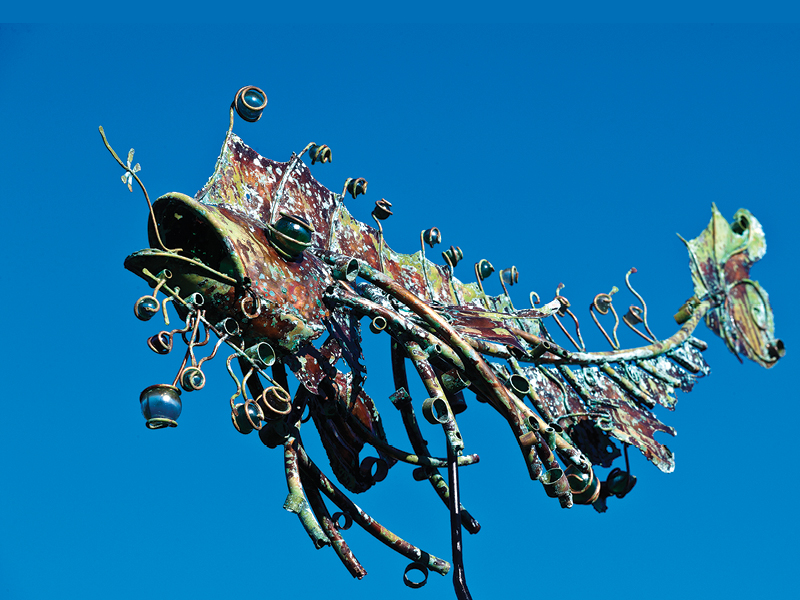By Tom Geddie
In this button-down society of side-by-side homes that in more urban areas can be hard to tell apart, one of the great – yet often unspoken and seldom acted on – yearnings is to express one’s self as an individual. For some, that’s as simple planting some roses or some hardy but delicate-looking pansies in the front yard or, for the private person, fixing up the back yard just a little bit.
For others, the desire for self-expression can become a passion, bursting out of the mind or the studio all over the yard.
In her recent book, Yard Art and Handmade Places: Extraordinary Expressions of Home, Jill Nokes shared colorful examples of just what people will do to express creativity and beliefs, and simply to reinforce or explore sense of self and surroundings. The book is more about a sense of place, turning a space into something personal with a variety of plants, stones, sculpture, structures, metal, water, and other materials.
All such places share “their strong identification with the particular spot where they live, and their determination to use their property to express publicly a very personal vision of what it means to live and belong there,” Jill said. “I hope to contribute a new perspective on the ways residential property can be transformed into extraordinary places of memory and meaning. By looking at the ways people use their yard or garden to create particularly exuberant statements about themselves, their history or background, and even religious beliefs, I learned that the larger meaning binding all these places together is what they have to say about the relationship of the owner to his or her homeland.”
Jill tells the owners’ stories, too: the ranch hand who patiently, day after day, added limestone to his home and created a waterfall as a monument to his wife; the man who sees the dimensions of the universe in his garden; the sixth-grade dropout who weaves memories of discrimination and poverty with references to Darwin, Nebuchadnezzar, archeology, geology, and art history; the woman who turns her home into roadside shrines and sanctuaries.
Such exuberance individuality exists in the book so we know it’s real. But it can be hard to find examples of those gloriously cluttered places that express spirited determination to be different – not necessarily to simply be different, but to turn yards into colorful adventures – into genuine folk art. Here’s a challenge: show us your yard art. Photograph your yards. Send the pictures to [email protected] or to PO Box 608, Ben Wheeler TX 75754. (Caution: Don’t photograph somebody else’s yard without permission; while most would welcome the attention, some would not. And every one would want to know what was going on.) We’ll find room to share the best of them.
So, just exactly what qualifies as yard art?
One man who makes it – and sells individual pieces, but so far no great accumulations to lots of people – is Randy Martin of Flying Fish Gallery in Ben Wheeler. Randy tends to use dark organic colors such as rust, copper, and bronze. He often searches the Internet for different kinds of kinetic art – art that moves, like a simple weathervane – in the wind.
“Yard art is just like a simple little dressing to tie people and the yard or garden together, a playground for art in a natural setting,” Randy said. “It’s not supposed to take away from but add to your garden. It is a personal expression just like any other art, and people become part of the story of the pieces they’ve purchased or made for themselves.”
“Yard art adds a little whimsy,” he said. “To me, the kinetic part catches the eye. It kinda makes you smile like a flower makes you feel good. It tickles your fancy.”


